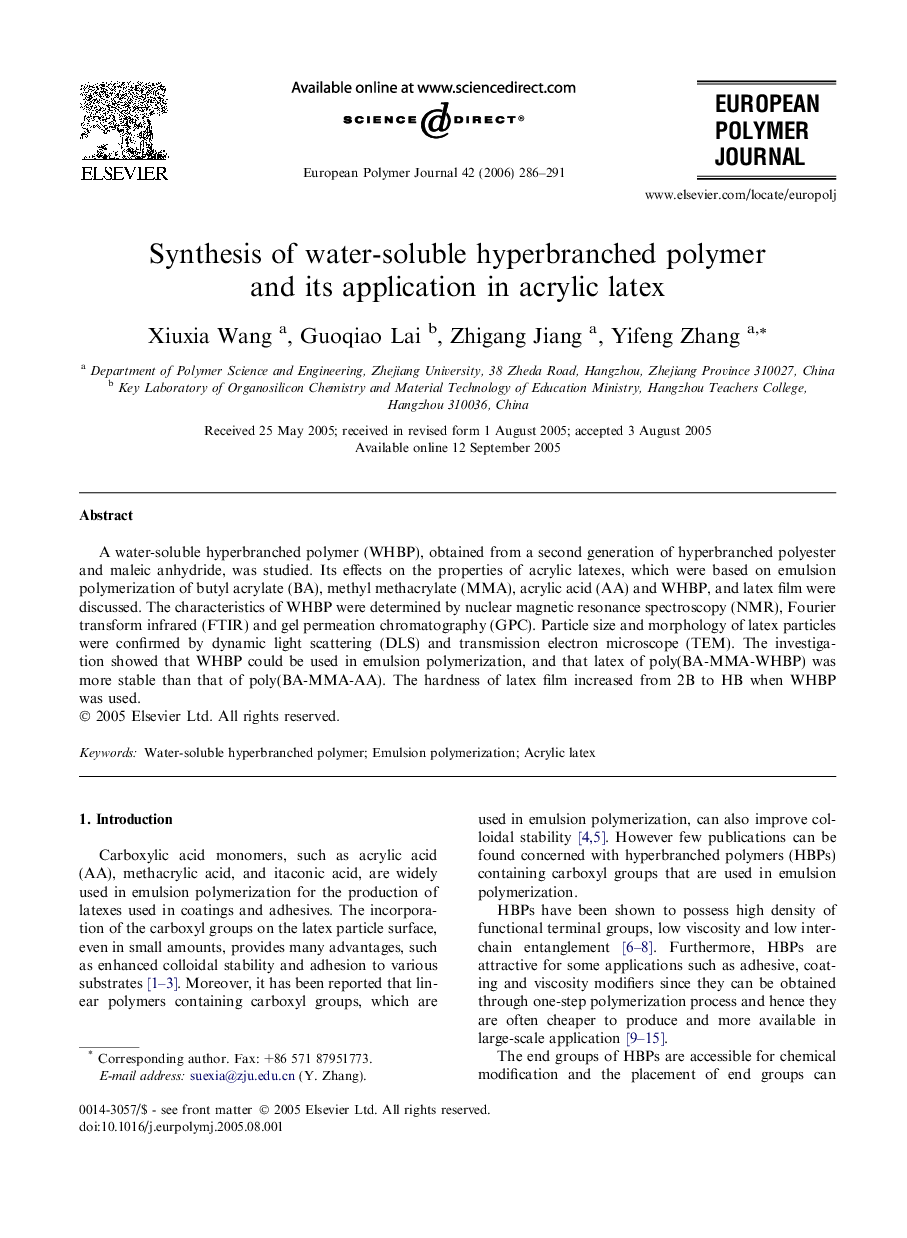| Article ID | Journal | Published Year | Pages | File Type |
|---|---|---|---|---|
| 1403994 | European Polymer Journal | 2006 | 6 Pages |
A water-soluble hyperbranched polymer (WHBP), obtained from a second generation of hyperbranched polyester and maleic anhydride, was studied. Its effects on the properties of acrylic latexes, which were based on emulsion polymerization of butyl acrylate (BA), methyl methacrylate (MMA), acrylic acid (AA) and WHBP, and latex film were discussed. The characteristics of WHBP were determined by nuclear magnetic resonance spectroscopy (NMR), Fourier transform infrared (FTIR) and gel permeation chromatography (GPC). Particle size and morphology of latex particles were confirmed by dynamic light scattering (DLS) and transmission electron microscope (TEM). The investigation showed that WHBP could be used in emulsion polymerization, and that latex of poly(BA-MMA-WHBP) was more stable than that of poly(BA-MMA-AA). The hardness of latex film increased from 2B to HB when WHBP was used.
